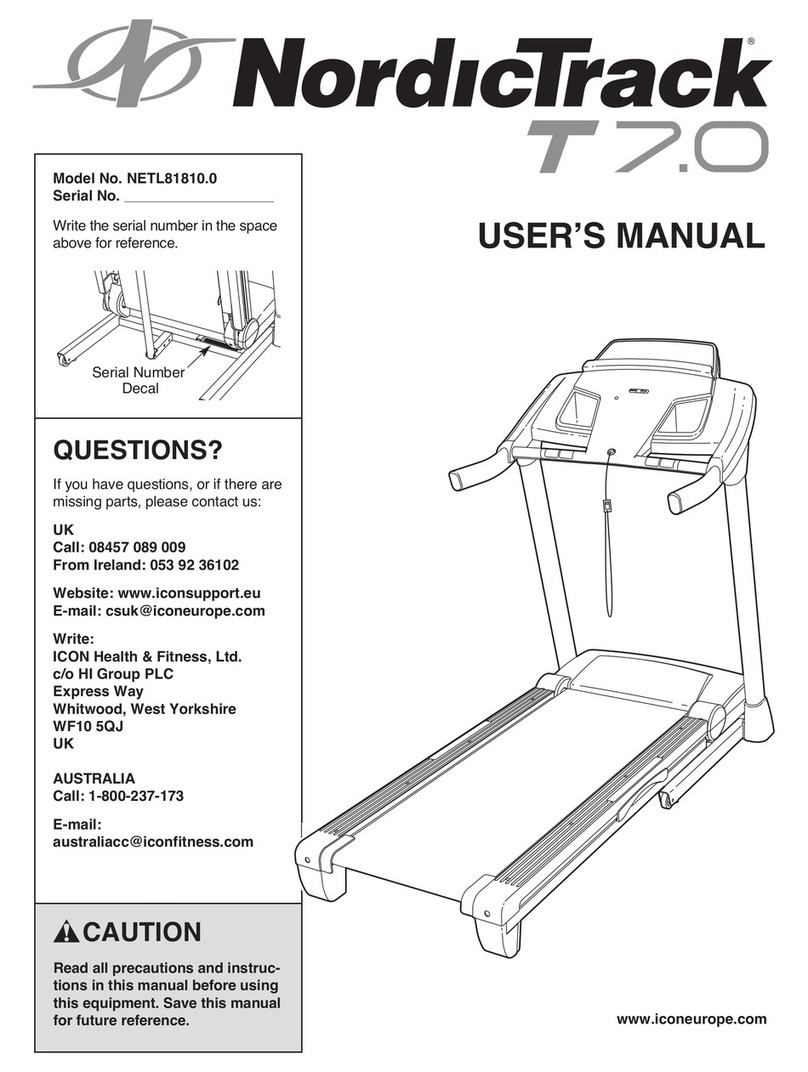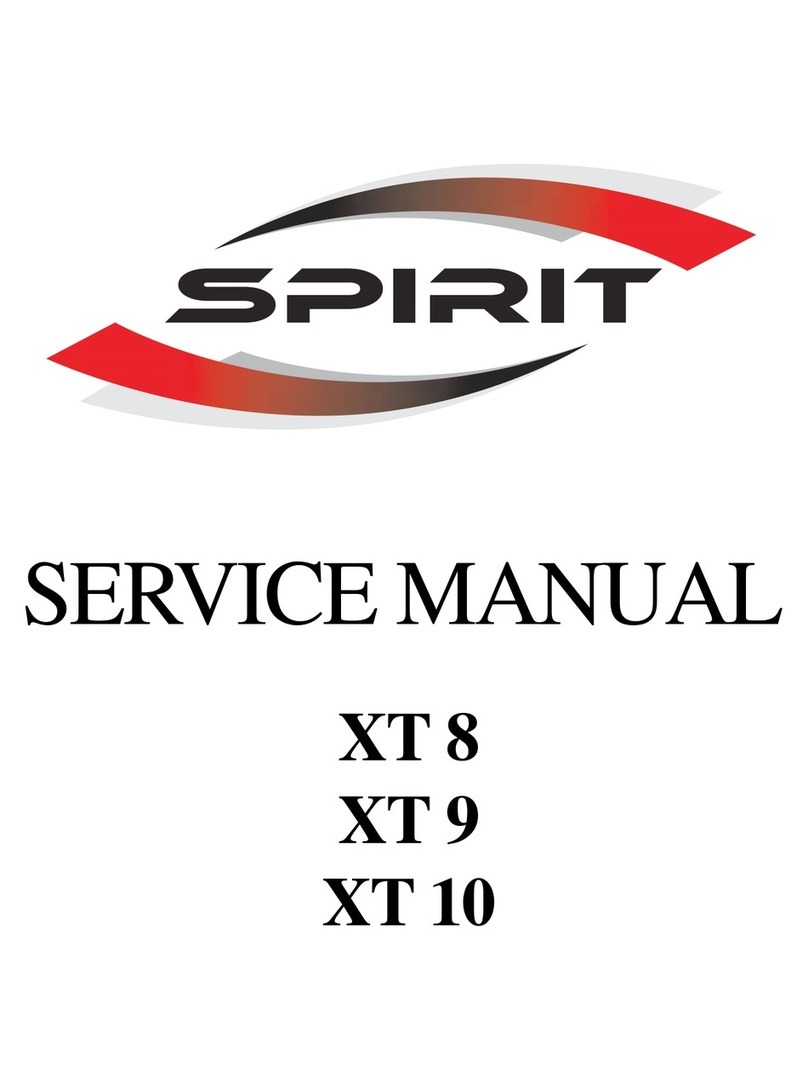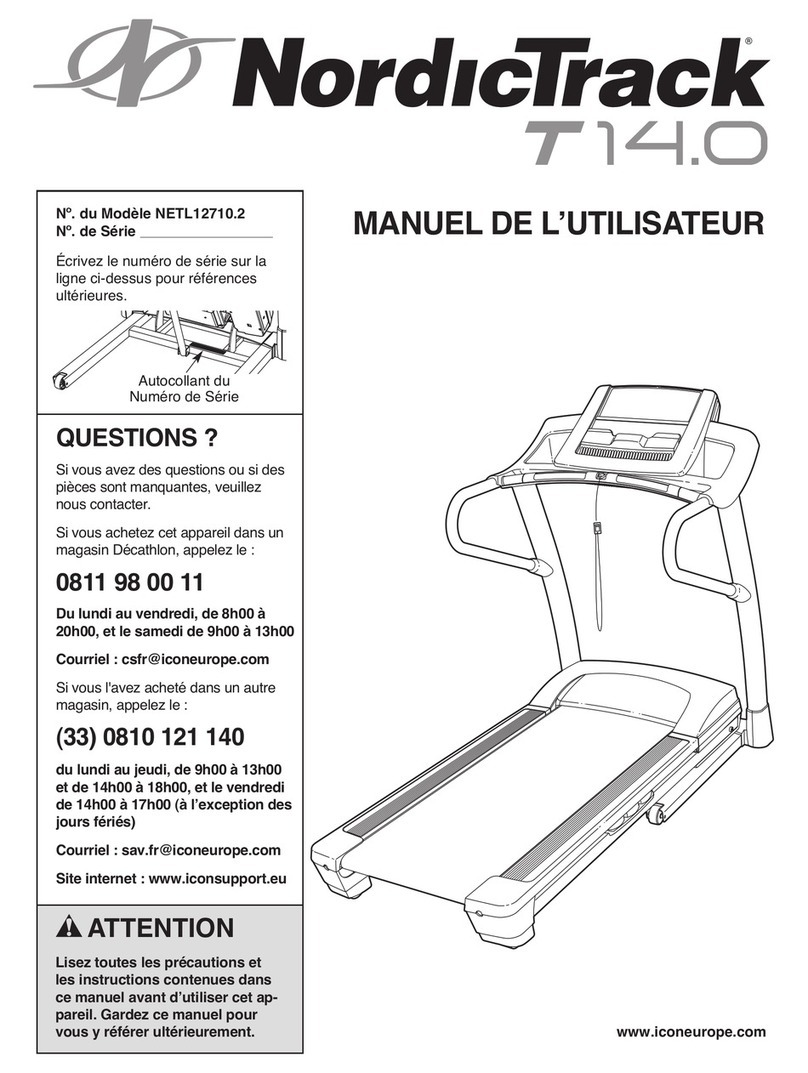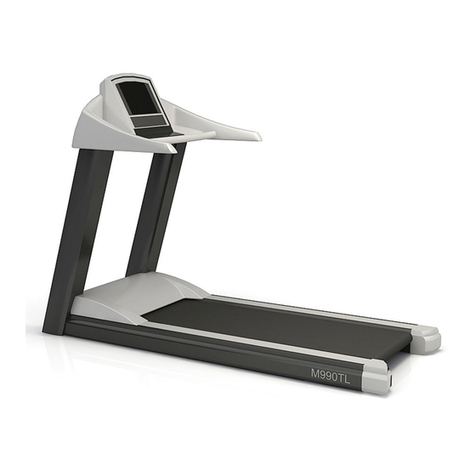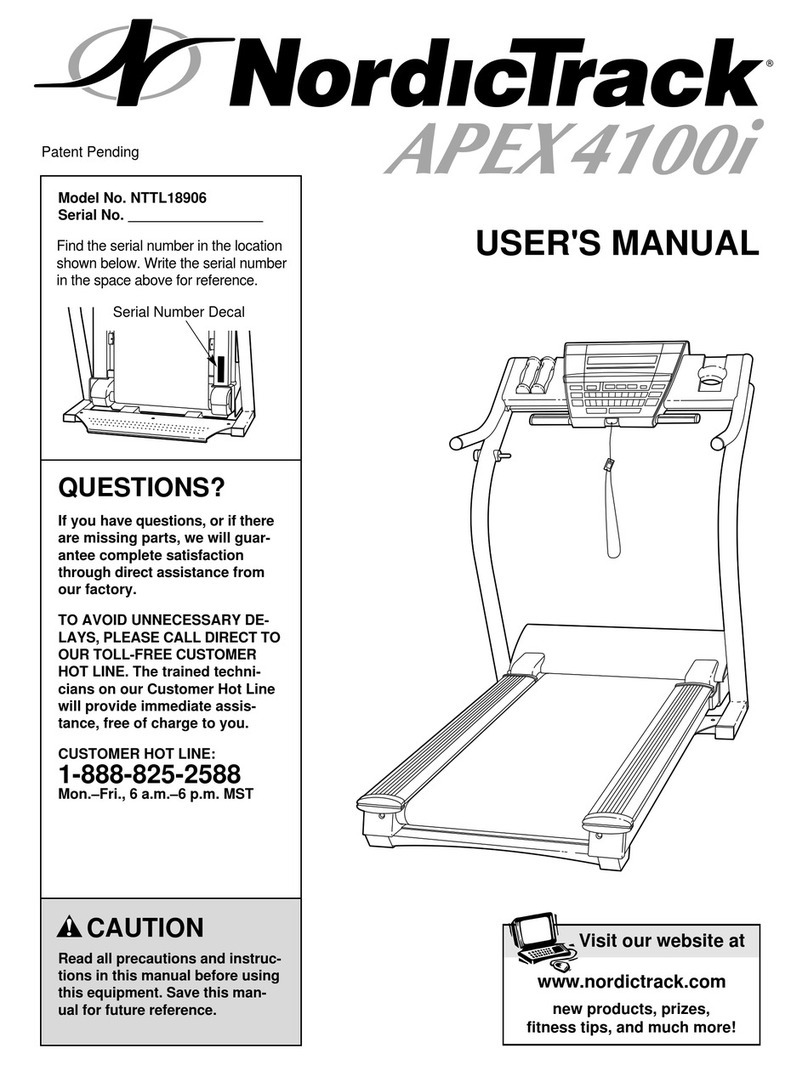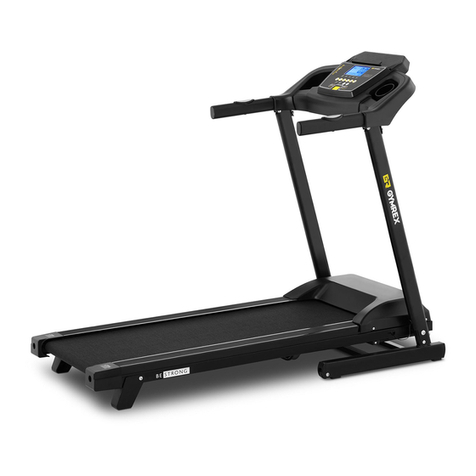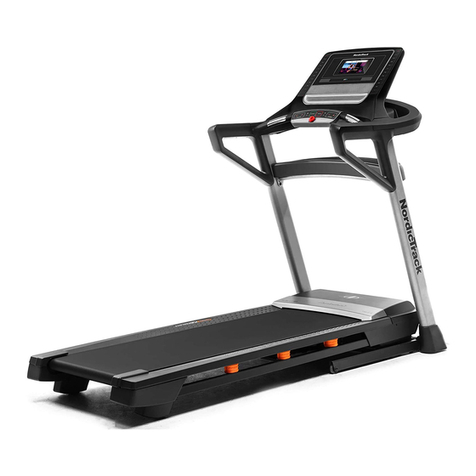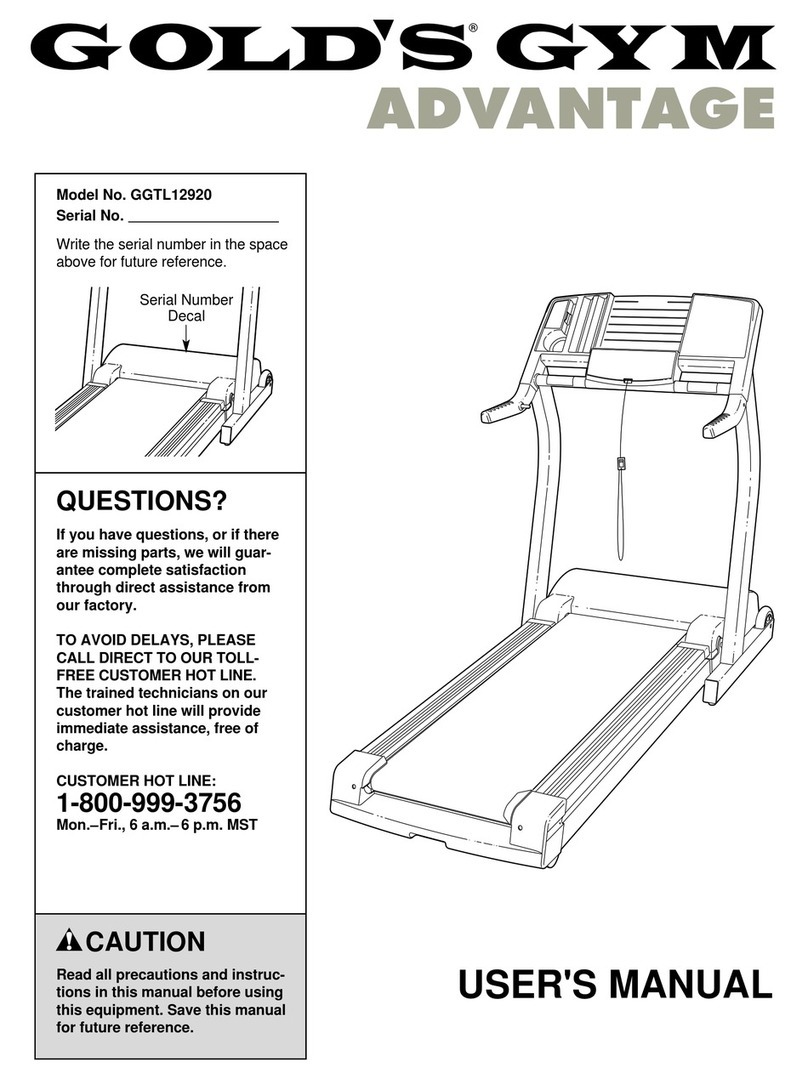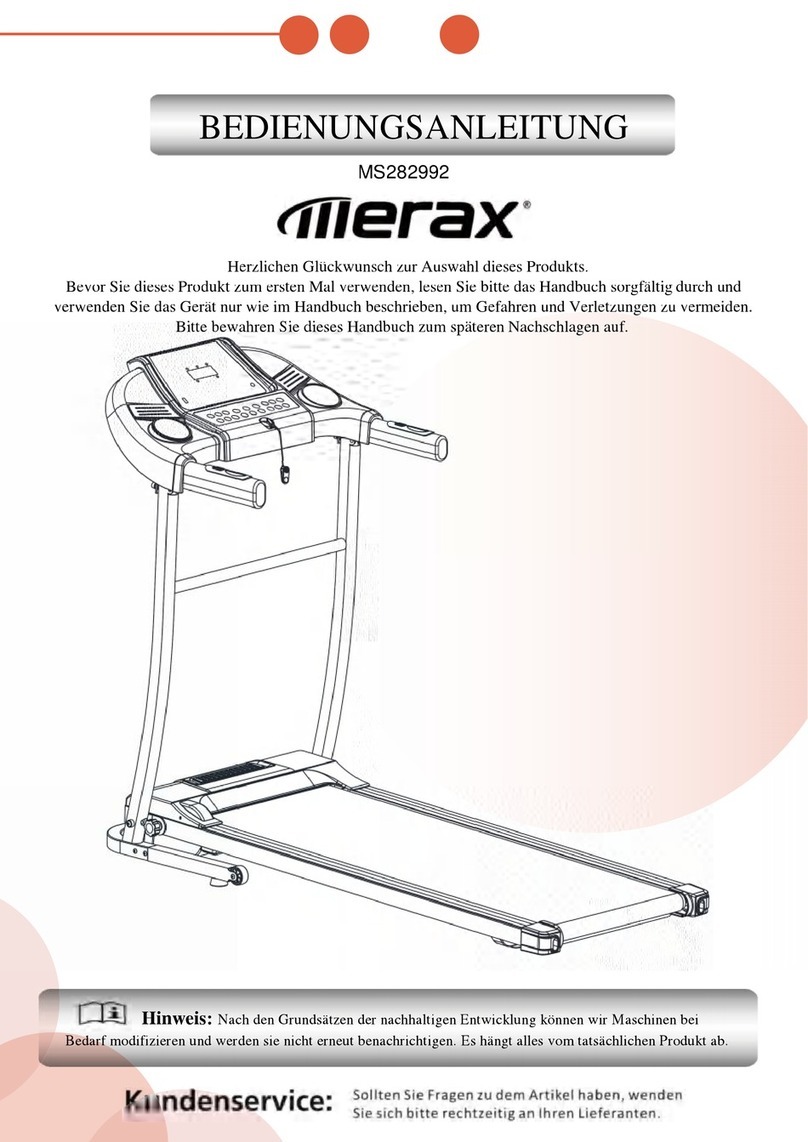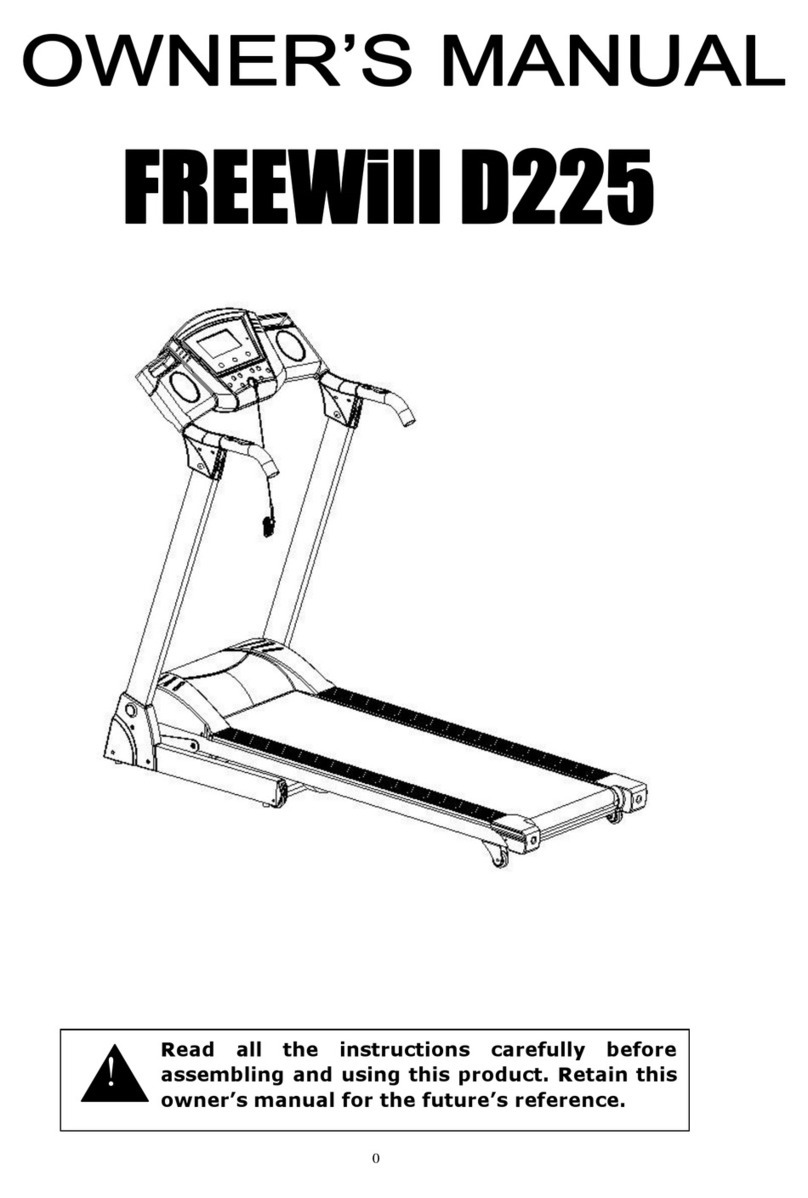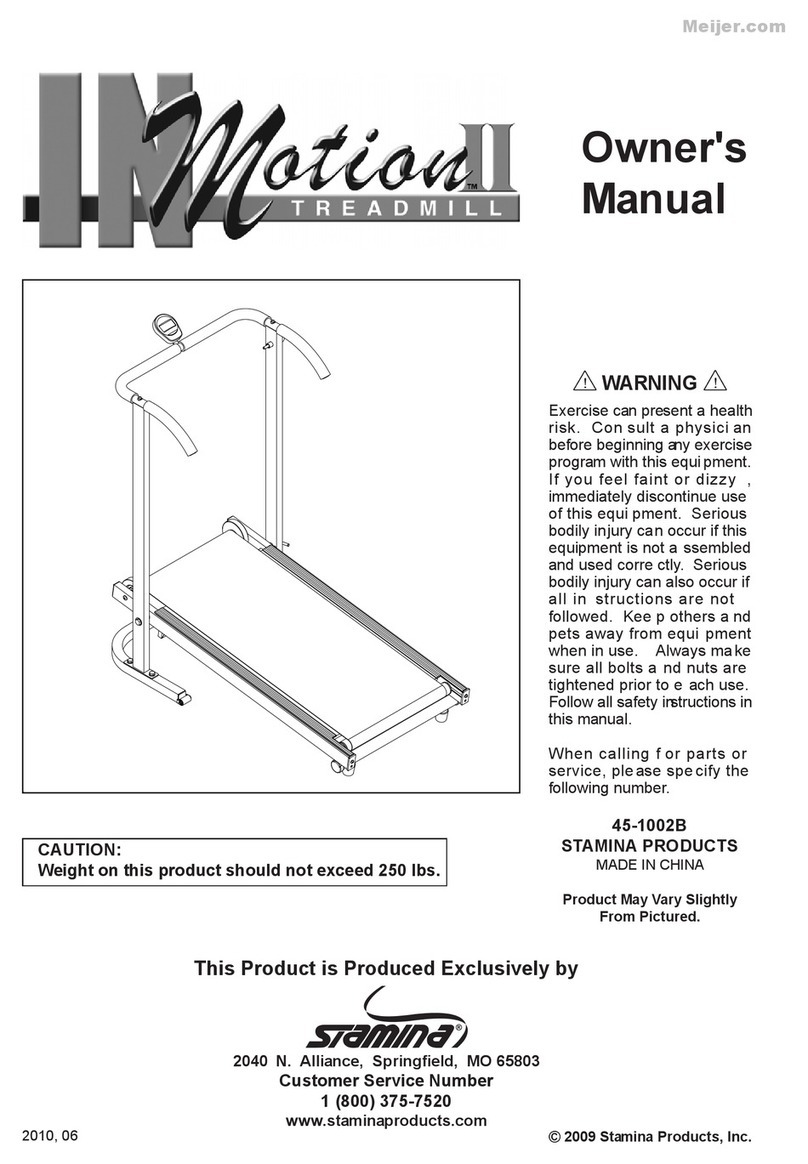OPERATIONAL INSTRUCTIONS
10
1. Do not mix a new battery with an old battery.
2. Use the same type of battery. Do not mix an alkaline battery with
another type of battery.
3. Rechargeable batteries are not recommended.
4. Ultimate disposal of battery should be handled according to
all state and federal laws and regulations.
5. Do not dispose of batteries in re.
NOTE:
CALORIES:
1. Open the Battery Door on the back of the meter.
2. The meter operates with two AAA batteries, the batteries are not
included. Refer to the illustration to install or replace the batteries.
HOW TO INSTALL AND REPLACE BATTERIES:
TIME:
Automatically scans each function of TIME, SPEED, DISTANCE, and CALORIES in
sequence with change every six seconds. Press and release the button until "SCAN"
appears on the display.
Displays the time from one second up to 99:59 minutes.
Displays the current speed from zero to 99.9 miles per hour.
Displays the distance from zero to 999.9 miles.
Displays the calorie burned from zero to 999.9 Kcal.
The calorie readout is an estimate for an average user. It should be used only as a
comparison between workouts on this unit.
SPEED:
FUNCTIONS:
SCAN:
DISTANCE:
Press to select display functions, including SCAN, TIME,
SPEED, DISTANCE, and CALORIES.
Press and hold for three seconds to reset all functions to
zero.
The meter will shut off automatically after four minutes of inactivity. All function values
will be kept. Press the button and hold it down for three seconds to reset all functions
to zero.
NOTE:
AAA Batteries
Walking Belt movement or press the button.
Automatically shuts off after four minutes
of inactivity.
POWER OFF :
POWER ON :
MODE BUTTON:
USING THE FITNESS METER

